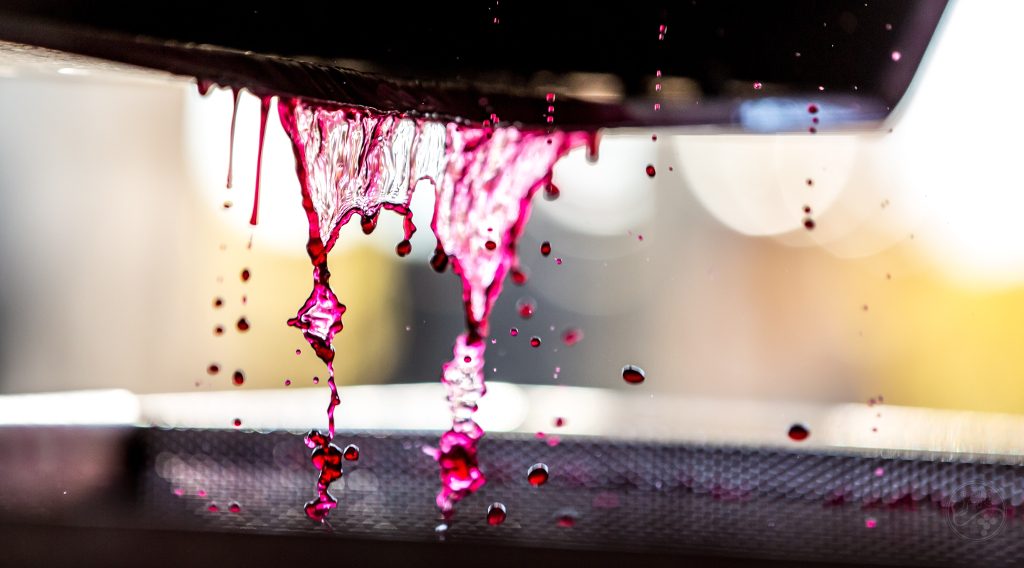Bordeaux is synonymous with fine wine and evokes images of elaborate chateaux. The name Bordeaux refers to both the French region and the wine from that region.
Almost 90% of Bordeaux wines are red though delicious white wines are also produced. Generally, the reds and have a distinct flavour: marked acidity, lively fruit and tannin. Oak ageing produces important nuances and the finest wines are concentrated, long lived and evolve with time.
Bordeaux’s vineyards are divided by Gironde estuary flowing from the Atlantic Ocean that branches into the Garonne river to the left and the Dordogne on the right. The two major zones, Left Bank with its capital city Bordeaux and the Right Bank centred on the smaller port of Libourne. The region’s maritime climate is moderated by the rivers and it is somewhat marginal (not warm) – where the grapes usually just ripen during a long, gradual growing season before autumn conditions become unfavourable.
Bordeaux is a blended wine (in fact, most wines are blends; blends of different sites, tanks, barrels, grapes etc..) Blending is the key to success when growing grapes for wine in a marginal climate. Depending on where in Bordeaux you are, the quality and character of a vintage is determined by what weather happens, when it happens and which crops are affected by it.
Bordeaux is all about “the right fit” of a grape variety to a particular soil and microclimate. The Bordelais rely on different cepages (grape varieties) because of: different soils, different climatic conditions throughout the region, the different life cycle of the vines.
Blending is a way of ensuring reduced risk of total crop loss to unpredictable weather by having a number of different varieties planted, like a diversified portfolio of investments!
THE RED GRAPES OF BORDEAUX AND THEIR CHARACTERISTICS
Cabernet Sauvignon – Full, tannic with characteristic cassis fruit, mint, cedar. Slow to mature, gives body and structure and intensity of colour to the blend. Also contributes to longevity of wines. The vine buds later than the other varieties, therefore it is less susceptible to spring frosts, It also flowers later so early spring rains that may reduce the earlier Merlot crop may not affect the Cabernet Sauvignon crop. Cabernet Sauvignon is the last to ripen so it is less favourable in the cooler areas away from the warming water and at higher elevations.
The vine does best in drier, well drained soils. It prefers the outcroppings of deep gravel, typical of the Medoc, that allow water to flow straight through, keeping the soil relatively dry. Gravel also has the added benefit of storing daytime heat and radiating it at night to aid in ripening the fruit.
Merlot – The most widely planted red grape of Bordeaux. Adds plump succulent fruit, round fullness and alcohol (as the grape typically reaches higher sugar levels than Cabernet Sauvignon, there is more naturally available sugar to convert into alcohol). Softer acid and lower tannin helps round out the edgier Cabernet Sauvignon. The Vine buds earlier and flowers earlier than Cabernet Sauvignon, making it more susceptible to spring frosts and earlier spring rains which can be problematic resulting in poor fruit set thus affecting that year’s crop. Merlot ripens earlier, so it is the preferred grape where falls are cooler and growing season ends sooner, Merlot thrives on clay soils which are damper, cooler, heavier than gravel. Merlot is the predominant grape of the Right Bank and on non-gravel parts of the Medoc.
Cabernet Franc – Lighter in body and structure (softer tannins) than Cabernet Sauvignon. It adds perfume and earthy seasoning to the blend. Earlier ripening than Cabernet Sauvignon and does well in limestone soil. Cabernet Franc is preferred over Cabernet Sauvignon in much of St. Emilion and Pomerol where it ripens before the cooler autumn temperature sets in. This grape’s ability to ripen in a shorter growing season makes it a viable grape for cooler climate regions with shorter seasons such as parts of Canada.
Malbec -Adds juicy, rich flavour when used, but much in decline. Makes Cabernet Sauvignon fleshier, more supple.
Petit Verdot – Adds perfume, colour and tannin to the blend, but because of its late ripening and reputation to be a finicky grower it is increasingly rare.
Carmenere – One of the most ancient varieties in Bordeaux providing depth of colour, herbal, gamey notes and complexity to wines. Plantings in Bordeaux however have not been maintained as it is difficult to grow. It has become a favourite grape in Chile.
Stay tuned for more on Bordeaux…


